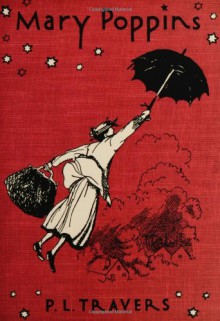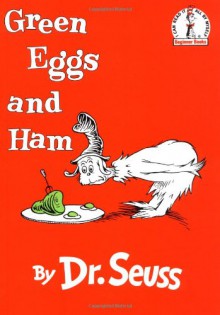
Mary Poppins comes as a nanny to the Banks' children. They go on adventures with her but are they real? Only Mary Poppins knows for sure.

Mary Poppins comes as a nanny to the Banks' children. They go on adventures with her but are they real? Only Mary Poppins knows for sure.

The Compleet Molesworth by Geoffrey Willans and Ronald Searle (co-creator and illustrator) had been on my TRL for ages. I was intrigued by the illustrations that were depicted on the cover and its comparison to my dear Roald Dahl. This is a classic children's series (bound together in its entirety here) about a boy named Nigel Molesworth who narrates his time in a boy's boarding school called St. Custard's. Willans captures the spirit of boyhood in a private boarding school especially well owing to his being a Headmaster himself. (This is even funnier once you get to know Headmaster Grimes who is particularly fond of the cane.) This book is replete with bad spelling (evidenced in the title) and absolutely stunning illustrations by Searle who was a satirical cartoonist (perfect for this series). Molesworth and his buddies get up to many hi-jinks and shenanigans which are generally instigated by our hero. Amidst all of this tomfoolery Willans and Searle have taken jabs at the inequalities of the classes by showcasing the Head Boy Grabber as only being placed in such a prestigious position because his parents shell out lots of money. (The Headmaster is greedy and generally does all he can to cut corners most notably with the selection of food offered to the students.) If you can get used to the bad spelling, grammatical errors, made-up slang, and seemingly arbitrary abbreviations for everything you will see why this has held up as a true children's classic. It's witty, cutting in its bluntness, and in general everything I hoped it would be. 10/10
 |
| Source: Amazon.co.uk |
 |
| I wanted to give a little taste for the delights that await you. |
What's Up Next: Space Dumplins by Craig Thompson
What I'm Currently Reading: Tales from the Inner City by Shaun Tan

Franklin's New Friend by Paulette Bourgeois is one of my childhood favorites. It is a wonderful story about friendship and making new friends. It teaches a valuable lesson on not "judging a book by its cover" and instead getting to know someone for who they are. I believe this would be a great read for children of all ages. The storyline is easy to follow and the vocabulary is great for all ages.
I would use this lesson to emphasize the importance of accepting those who are different from us instead of discriminating against them. I would encourage people to embrace their differences and the difference of others. This is a great character building book. I would also use this book to inspire students writing. I would ask them to write a story about a time they misjudged something or someone and turned out to enjoy it or like it/them in the end.
Lexile Measure: 380L

Panda Bear, Panda Bear, What Do You See? by Bill Martin, Jr. and Eric Carle is an outstanding book for young readers to read. The variety of animals in this book allows for a broad representation of animals that can be found in the wild. I adore the illustrations which are simple and clear with a bit of abstract flair. This book also includes many descriptive words. For example, instead of "bear" the character is named "Panda Bear". Each animal has a different verb attached to the action they are completing, allowing readers to build their vocabulary.
I would like to use this book in the classroom by asking students to select one animal from the story and research it. They will read books and use iPads/laptops to find where they live (water, land, in homes as a pet, etc.), what they eat, and more. The students can draw and color their animal as well. After they have gathered all of their research, the students will be encouraged to present their animals to their class.
Lexile: AD640L
Accelerated Reader Level: 2.5

Dr. Seuss's Green Eggs and Ham is another classic children's book. This book is a fun read for young readers--whether they are just beginning to read or are advanced in their reading. The alliteration and rhyming is an added bonus to an already great book. Readers can familiarize themselves with rhyming and alliteration and these literary devices also keep the book fun and interesting.
I would use this book in the classroom during a lesson on literary devices--specifically rhyming. I would ask students to play a rhyming puzzle card game where they must retell the story by matching rhyming word pairs. This would serve as a quick and fun review of the game but also practice rhyming.
Lexile Measure: 210L